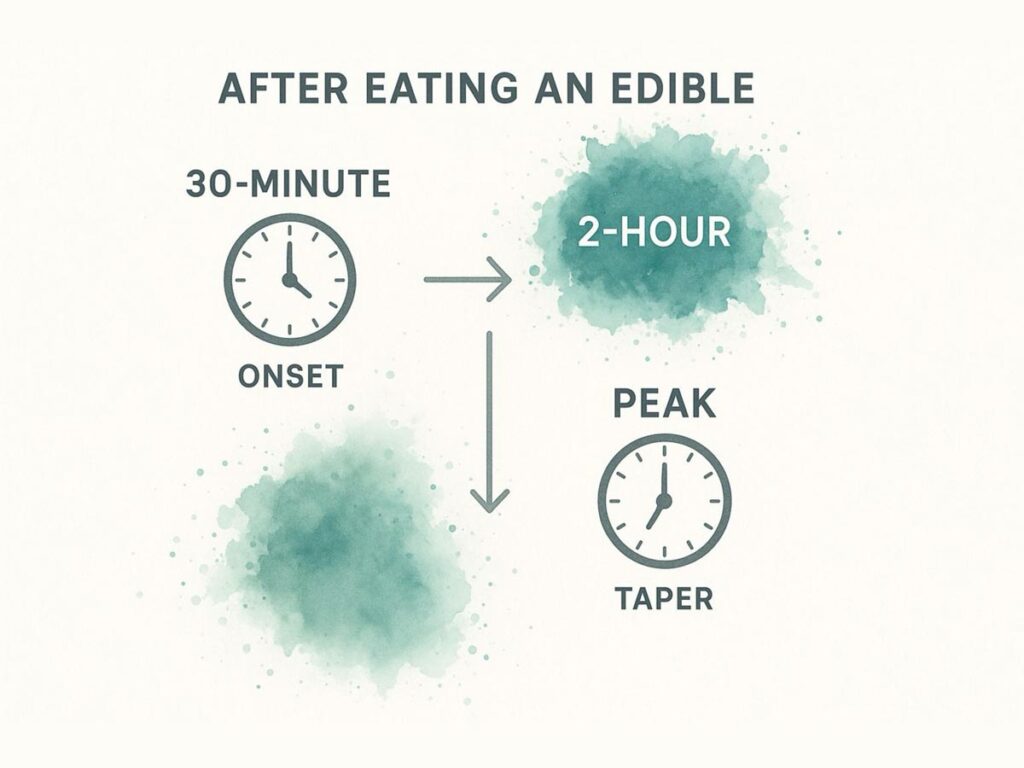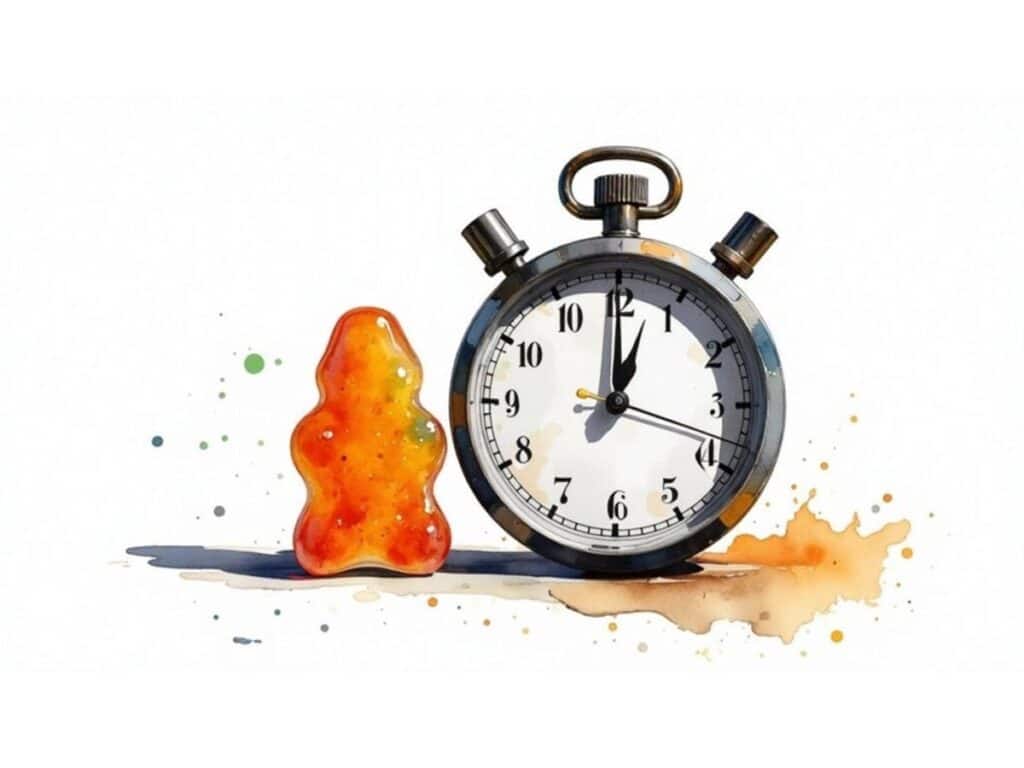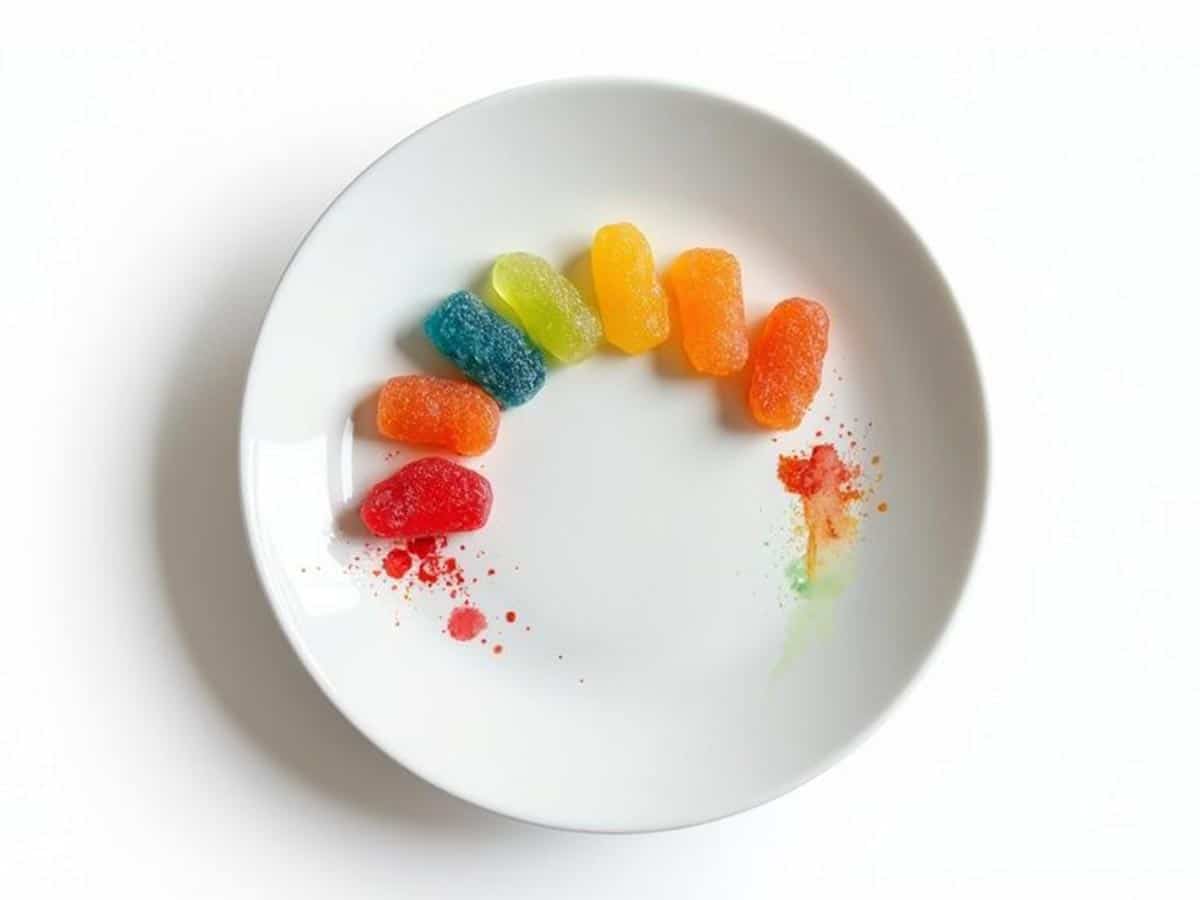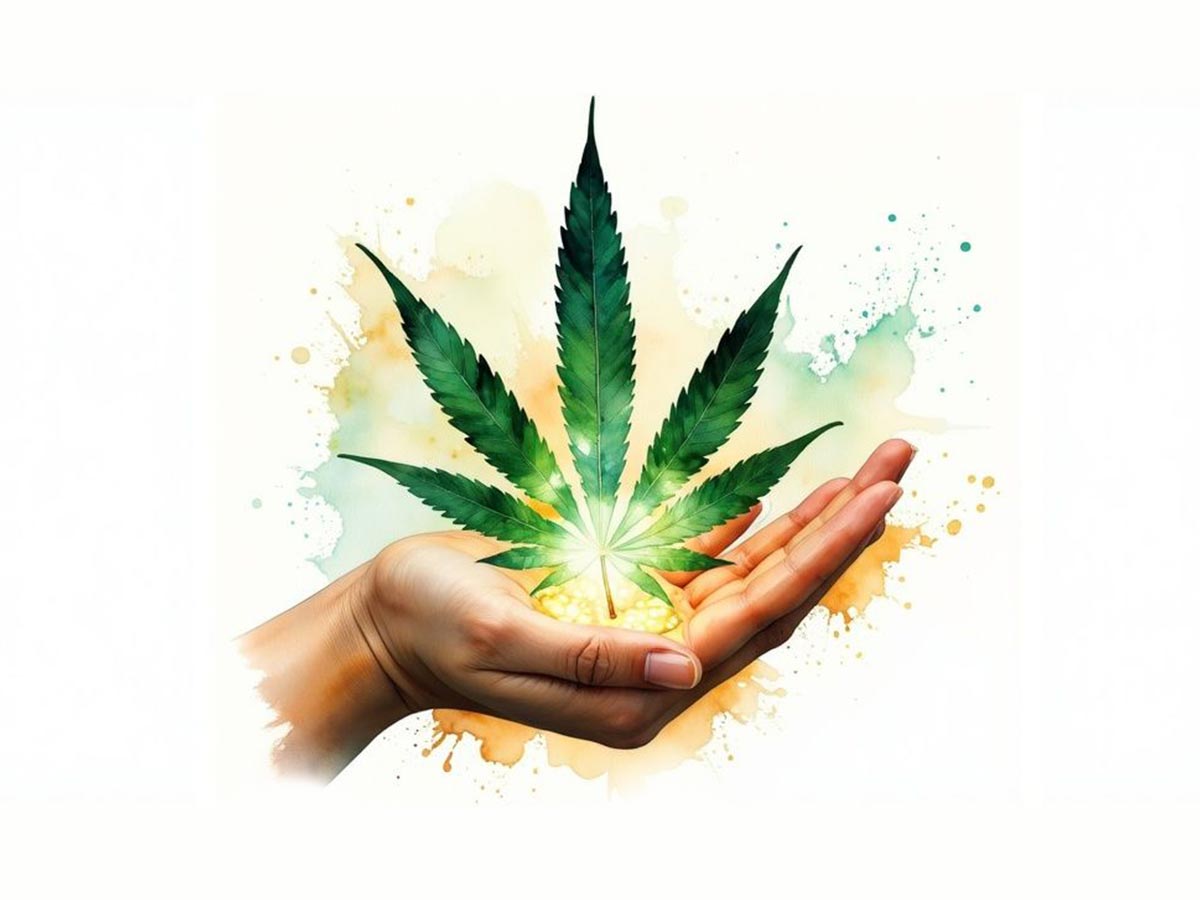So, you’re wondering how long edibles really last? It’s the million-dollar question for anyone venturing into the world of THC-infused treats. On average, you can expect the whole experience to last somewhere between 6 to 8 hours, with the peak effects hitting around the 2 to 3-hour mark.
But here’s the secret: that’s just a benchmark. Your personal journey is completely unique, and factors like your metabolism, the dose you took, and even what you ate for lunch can rewrite the entire timeline. Ready to take control of your experience?
Your Edible Experience: A Clear Timeline
Think of an edible high like a roller coaster. You don’t just blast off at top speed. First, there’s that slow, click-clack climb to the top before you hit the exhilarating peak, followed by a long, gentle coast back to the station.
Knowing these different phases helps you map out the experience. It takes the guesswork out of the equation and lets you plan for a safe, enjoyable ride from start to finish.
The whole trip breaks down into four main stages. Keep in mind, these timeframes are just a guide—your mileage may vary, and we’ll dig into why a little later.
The Four Phases of an Edible High
Here’s a simple play-by-play of what most people can expect after taking a standard dose:
- The Onset (30-90 minutes): This is the waiting game. Your body is digesting the edible, and your liver is converting the THC into a more powerful form. You might not feel a thing at first, which is exactly why the golden rule is patience. Don’t take a second dose!
- The Climb (1-2 hours): Things are starting to happen. The effects slowly build as the THC makes its way into your bloodstream and starts interacting with your brain. This is a gradual ascent, not a sudden launch.
- The Peak (2-4 hours): Welcome to the main event. During this window, the effects are at their most powerful and noticeable. This is where you’ll experience the full intensity of the edible.
- The Comedown (4-8+ hours): After the peak, the effects begin to gently fade. This decline is much slower and more gradual than the climb, leading to a smooth and mellow return to your baseline over the next several hours.
To make it even clearer, here’s a quick-reference table outlining what you can typically expect from a standard 10mg edible.
Typical Edible Experience Timeline (10mg Dose)
| Phase | Average Time After Consumption | What to Expect |
|---|---|---|
| Onset | 30–90 Minutes | You won’t feel much yet. Your digestive system is just getting to work. |
| The Climb | 1–2 Hours | Mild effects start to creep in. A light buzz or a shift in perception begins. |
| Peak | 2–4 Hours | The effects are at their strongest. This is the most intense part of the experience. |
| Comedown | 4–8+ Hours | Effects gradually and gently taper off. You’ll slowly return to your baseline. |
This timeline gives you a solid framework, but remember it’s not set in stone.

As the infographic highlights, the peak doesn’t hit right away, and the whole experience is a marathon, not a sprint. For a typical 10 mg dose, most people will feel the effects for about 6 to 8 hours.
However, if you’re a beginner, your lower tolerance could stretch that out to 12 hours. On the flip side, a seasoned user might find the effects wear off in as little as 4 hours. If you want to dive deeper into how dosage and tolerance play a role, you can find a great breakdown of how these factors affect duration over on cannabismdtelemed.com.
Why Edibles Feel So Different From Smoking
If you’ve only ever smoked or vaped, the slow, creeping arrival of an edible high can be a whole new world. And you’re not imagining things—it is a completely different experience. The science behind how your body metabolizes THC when you eat it versus when you inhale it is fundamentally different, which is the key to understanding how long edibles last and why patience is your best friend.
Think of it like this: smoking is the express train. THC hits your lungs, zips straight into your bloodstream, and arrives at your brain in minutes. The effects are quick, obvious, and they tend to fade out just as fast.
Edibles, however, take the scenic route.
The Liver’s Detour: Understanding the First-Pass Effect
When you eat a gummy or a brownie, it doesn’t go straight to your brain. Instead, it has to travel through your entire digestive system and make a mandatory pit stop at your liver. This metabolic journey is known as the first-pass effect.
This is precisely why edibles can take anywhere from 30 to 90 minutes to kick in. During its stay in the liver, standard THC (Delta-9-THC) gets a makeover. Your liver converts it into a much more powerful compound called 11-hydroxy-THC. This potent metabolite is the star of the show, and it’s the reason an edible high often feels stronger and lasts much, much longer than the effects from smoking.
This diagram illustrates how anything taken orally gets processed by the liver before it ever reaches the rest of your body.

As you can see, the liver is like a chemical conversion plant, fundamentally changing the THC before sending it on its way.
Because 11-hydroxy-THC is better at crossing the blood-brain barrier, it creates a more intense and deeply physical high. This metabolic detour is the secret sauce behind the unique longevity and power of edibles.
This whole process also explains the classic rookie mistake: taking more because you “don’t feel anything yet.” Someone gets impatient, eats a second dose, and suddenly gets hit by a freight train an hour later when both doses finally kick in.
Knowing about the first-pass effect is your best defense against an uncomfortably strong experience. This unique, body-centric high is also why so many people look for the best indica edibles specifically for relaxation and sleep—the long-lasting, calming effects are a perfect match.
Key Factors That Shape Your Edible Experience
If you’ve ever asked, “how long do edibles last?” you’ve probably realized there’s no simple answer. That’s because the experience is never one-size-fits-all. Think of it less like a fixed recipe and more like your personal soundboard—several dials control the timing, intensity, and overall vibe of your journey. Getting to know these controls is the key to a predictable and enjoyable experience.
From your own body chemistry to the type of edible you choose, every single factor plays a part in shaping the onset, peak, and how long the effects stick around. Once you understand these variables, you can stop guessing and start making informed choices that actually match what you’re looking for.

Your Unique Body Chemistry
Before anything else, it all starts with you. Your body is the main stage for any edible experience, and just like some people get wired from coffee while others get sleepy, your unique biology calls the shots on how you process THC.
It’s entirely possible for two people to take the exact same dose and have wildly different experiences. Here’s why:
- Metabolism: If you have a fast metabolism, your body will process everything more quickly. This can lead to a faster, more intense onset, but the effects might not last as long. A slower metabolism, on the other hand, often means a longer wait for the effects to kick in and a longer overall duration.
- Body Weight and Composition: Your size and body fat percentage can influence how THC is absorbed and stored. Since cannabinoids are lipophilic (meaning they bind to fat), they can be stored in fat cells, which can sometimes extend their presence in your system.
- Tolerance: This is a big one. If you’re a regular cannabis user, your body naturally builds a tolerance. A seasoned veteran might need a much higher dose to feel the same effects that a first-timer would get from a tiny amount. For them, the duration might also be shorter.
The Dose Makes the Difference
This is probably the most important dial you have direct control over. The amount of THC in an edible—measured in milligrams (mg)—has a direct and powerful impact on both the intensity and the duration of the effects.
This is where the golden rule of edibles comes from: start low and go slow.
For instance, a 5mg dose is a fantastic starting point for beginners. It typically produces mild, easy-to-manage effects that last around 4-6 hours. Jump up to a 25mg dose, however, and you’re in a different league. That’s considered a strong dose that can result in a powerful, long-lasting experience of 8-12 hours or more. It’s important to realize that doubling your dose doesn’t just double the intensity; it can dramatically extend the timeline.
You can always take more, but you can never take less. It’s far better to feel underwhelmed and try a bit more next time than to be stuck in an experience that’s way too intense.
What You Eat (Or Don’t Eat)
Think of your stomach’s contents as the launchpad. Whether you take an edible on an empty stomach or after a five-course meal will completely change the timeline.
Taking an edible on an empty stomach is like hitting the express lane. Your digestive system gets to work on it immediately, so the onset can be much faster—sometimes in just 30 minutes. The trade-off? The effects can feel more abrupt and intense.
On the flip side, enjoying an edible after a full meal slows everything down. Your body has to digest the food first, which means a much more gradual and delayed onset, sometimes taking up to two hours. The experience is often less intense but may last a bit longer.
Here’s a pro tip: eating a small, fatty snack with your edible can actually help. Since THC binds to fat, this can improve absorption and help your body process it more efficiently.
The Edible Itself Matters
Finally, the form factor of the edible makes a real difference. Not all edibles are created equal, and the ingredients and format determine how quickly your body can get to the THC.
- Gummies and Hard Candies: These dissolve in your mouth, which allows some of the THC to be absorbed sublingually (under the tongue). This little shortcut can sometimes lead to a slightly faster onset compared to other types.
- Baked Goods (Brownies, Cookies): These are more complex and packed with ingredients like flour, oil, and sugar. Your body has to work harder to break them down, which typically means a more delayed and gradual onset.
- Cannabis-Infused Drinks: Liquids are a whole different story. Your stomach absorbs them much more quickly than solid food, giving beverages some of the fastest onset times around—you might start feeling effects in as little as 15-30 minutes.
How Long Do Edibles Stay Fresh and Potent?
When people ask, “how long do edibles last,” they’re usually talking about the experience itself. But there’s another clock ticking: the one on the product’s shelf life. An old edible isn’t just a letdown in the flavor department; you’re also looking at lost potency and even potential safety issues. Knowing how long your edibles stay good is just as critical as knowing how they’ll make you feel.
What really determines an edible’s longevity? It all comes down to its ingredients. Just think about your own kitchen pantry. A bag of gummies will always outlast a fresh-baked cookie, and the reason is simple: moisture and perishable ingredients. Baked goods made with butter, eggs, and milk have a much shorter fuse and will go bad just like any other treat from the bakery.
From Weeks to Years: The Shelf Life Spectrum
Not all edibles are built to last. Their specific ingredients dictate how long they’ll stay safe and effective, with lifespans that can stretch from just a few days to well over a year if you store them right.
Generally, edibles with perishable ingredients will spoil quickly, while more stable products like hard candies or gummies can last for months or even years. The real enemies here are heat, humidity, and light. The wrong storage environment will fast-track both spoilage and the breakdown of cannabinoids, leaving you with a weak, or worse, moldy product.
Here’s a quick rundown of what to expect:
- Baked Goods (Brownies, Cookies): These are the most delicate. They’ll typically only last a few days to a week at room temperature before they get stale or start to spoil.
- Chocolates: When stored properly in a cool, dark place, chocolate edibles can last for up to a year. You might see a white film called “bloom”—that’s just fat separation and doesn’t affect the potency.
- Gummies & Hard Candies: These are the long-distance runners of the edible world. Their low moisture content means they can easily last a year or more without any major loss in quality or strength.
To make it even clearer, here’s a quick-reference guide comparing the shelf life of different edible types and the best ways to store them.
Edible Shelf Life and Storage Guide
| Edible Type | Typical Shelf Life (Room Temp) | Best Storage Method |
|---|---|---|
| Baked Goods | 3-7 Days | Airtight container; fridge for longer |
| Chocolates | 6-12 Months | Cool, dark place; avoid fridge |
| Gummies | 12+ Months | Airtight container in a cool, dark spot |
| Hard Candies | 12+ Months | Airtight container in a cool, dry spot |
| Beverages | Varies (check date) | Fridge after opening |
| Tinctures | 1-2 Years | Cool, dark place (like a cabinet) |
Ultimately, a good storage plan is key to preserving the safety and potency of whatever edible you choose.
Pro Tip: Always remember to distinguish between food spoilage and potency loss. An edible might still be safe to eat, but if its THC has degraded, it won’t deliver the experience you’re looking for.
Spotting the Signs of a Bad Edible
Before you pop an older edible, take a moment to give it a quick once-over. Your own senses are the best tool you have for figuring out if a product is still good to go or belongs in the trash.
Trust your eyes and nose. If an edible smells musty, rancid, or just plain wrong, don’t take the chance. The same goes for any visible signs of mold or weird discoloration—those are clear warnings that it’s no longer safe to eat. Even changes in texture, like a gummy that’s turned into a rock or a cookie that’s way too crumbly, are good signs it’s past its prime.
Proper storage is your best line of defense. Using the best cannabis storage containers is a simple move that makes a world of difference. Keeping your edibles in a cool, dark, and dry place will dramatically extend their lifespan and ensure you get the experience you paid for, every single time.
Your Guide to a Safe and Enjoyable Edible Journey
Navigating your first edible experience—or even your fiftieth—is really all about preparation. Knowing what to expect and how to create a positive environment is the key difference between having a fantastic time and a stressful one. Think of this as your playbook for feeling in control, comfortable, and ready for an enjoyable ride from the moment you start.https://www.youtube.com/embed/DGlNc6tjTT8
If there’s one golden rule to remember, it’s this: start low and go slow. A beginner’s dose is typically somewhere between 2.5mg and 5mg of THC. You can always take more later, but you can never take less once it’s in your system. Seriously, patience is your best friend here.
Set and Setting: The Foundation for a Good Time
The environment where you take an edible, often called your “set and setting,” is just as important as the dose itself. Your mindset (“set”) and your physical surroundings (“setting”) have a massive impact on the kind of experience you’ll have.
Choose a place where you feel completely safe and relaxed, like your own home. Surround yourself with comforting things—your favorite playlist, a cozy blanket, or a funny movie. It’s also a great idea to have a sober friend hang out, someone you trust who can offer a little reassurance if you start to feel anxious.
This kind of structured approach to safety is becoming the norm across the industry. For instance, regulatory bodies now require producers to run independent shelf-life studies on their products to ensure that what you’re eating is not just effective but also safe. This shows a growing focus on consumer protection and quality control. You can learn more about these evolving cannabis edible safety standards and how they’re shaping the market.
What to Do If Things Feel Too Intense
Even with the best planning, you might find the experience is a bit stronger than you expected. If you start to feel overwhelmed, the first thing to do is not panic. Remember, the feeling is temporary and it will pass.
Here’s a simple toolkit of calming techniques to help you ride it out:
- Focus on Your Breath: Inhale slowly through your nose for four counts, hold for four, and exhale slowly through your mouth for six. This simple deep-breathing exercise can anchor you in the present and calm your nervous system right down.
- Change Your Scenery: Sometimes, all it takes is a simple change of pace. Move to a different room, step outside for some fresh air (if it’s safe), or just look out a window for a few minutes.
- Stay Hydrated and Have a Snack: Sipping on water and eating a regular, non-infused snack can help you feel much more grounded.
- Consider CBD: Many people find that CBD can help mellow out some of THC’s more intense psychoactive effects. Keeping a CBD tincture or gummy on hand can be a really helpful tool.
The key is to remind yourself that you are in a safe space and the feelings will subside. The goal isn’t to fight the experience, but to gently guide yourself through it with these simple, effective techniques.
Common Questions About Edible Duration
Even with a solid grasp of the timeline, you probably still have some questions floating around. That’s completely normal. Feeling truly comfortable with edibles comes from knowing what to expect in different situations, so let’s dig into a few of the most common things people ask.
Think of this as the practical advice you need after you’ve learned the science. These are the real-world “what ifs” that pop up, and getting them answered will help you feel much more prepared.
Can You Make an Edible High End Sooner?
The honest answer? Not really. You can’t just flip a switch and turn off an edible high. Once the THC is processed by your liver, your body is on a set course to metabolize it, and that simply takes time.
What you can do, however, is manage the intensity of the ride and make yourself more comfortable while you wait for it to fade. If things feel a little too intense, try these simple, grounding techniques:
- Hydrate: Sipping on a glass of water is a simple way to stay grounded and feel more in control.
- Have a Snack: Eating a regular, non-infused snack can help. Some people find it helps lessen the intensity.
- Find Your Calm Space: Put on some calming music, find a quiet room, and just focus on taking slow, deep breaths. This can work wonders for an anxious mind.
- Try Some CBD: Many people report that CBD can help mellow out the more intense psychoactive effects of THC. It’s not a silver bullet, but it can often take the edge off.
Above all, just be patient with yourself. Remember, the feeling is temporary and will pass.
Will I Feel a Hangover the Next Day?
It’s definitely a possibility. Some people, particularly if they’re new to edibles or took a higher dose than usual, might wake up feeling what’s often called an “edible hangover.” It’s not the pounding headache you get from alcohol, but more of a lingering grogginess, brain fog, or general fatigue.
This happens because the effects are so long-lasting that they can sometimes bleed into the next morning. To help avoid this, a good rule of thumb is to take your edible early enough to give yourself a full 8 to 12 hours before you need to be sharp and on your game. Staying hydrated during your experience also makes a huge difference in how you’ll feel the next day.
How Long Do Edibles Stay In Your System for a Drug Test?
This is a really important one, because how long you feel an edible and how long it’s detectable are two wildly different things. The high might be gone in less than a day, but the evidence can stick around for a lot longer.
The high itself lasts for hours. The detection window for a drug test can be weeks, or even months.
How long THC metabolites remain in your system depends entirely on factors like your metabolism, how often you consume, and the type of drug test being used.
- Occasional Users: If you only have an edible once in a blue moon, THC might be detectable in your urine for up to a week.
- Frequent Users: For those who use edibles daily or several times a week, that detection window can stretch to 30 days or more.
Understanding this distinction is absolutely critical. It’s also important to know the rules where you live. Before you buy anything, it’s always smart to check your local laws. For instance, you can learn more about the specifics of whether it’s legal to buy edibles online to make sure you’re staying informed and safe.



